Biology
· 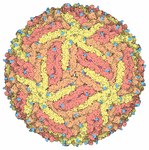
Virus (Zika virus)
· 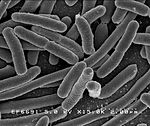
Bacteria
· 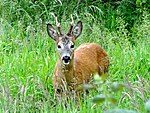
Animal (roebuck)
· 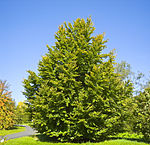
Plant (copper beech)
Biology or historically also life science (from ancient Greek βίος bíos "life" and λόγος lógos here: "doctrine", see also -logy) is the science of animate matter, living things. It is a branch of the natural sciences and deals both with the general laws of living things and with the particularities of individual living things: for example, with their development, their building plan and the physical and biochemical processes inside them. In the subject of biology, research is carried out in numerous sub-areas. The subfields that are generally oriented towards understanding living things include, in particular, biophysics, genetics, molecular biology, ecology, physiology, theoretical biology and cell biology. Botany (plants), zoology (animals) and microbiology (microorganisms and viruses) are concerned with large groups of living organisms.
The objects of observation in biology include molecules, organelles, cells and cell assemblies, tissues and organs, but also the behavior of individual organisms and their interaction with other organisms in their environment. This diversity of objects of observation means that a wide variety of methods, theories and models are applied and taught in biology.
Biologists are educated at universities within the framework of a biology degree program, and biology teaching students are also educated, at least for a time, within the framework of biology didactics.
In more recent times, as a result of the fluid transitions into other scientific fields (e.g., medicine, psychology, and nutritional sciences) and because of the interdisciplinary nature of research, other designations have become established for biological research directions and training courses in addition to the designation biology, such as biosciences, life sciences, and life sciences.
History
→ Main article: History of biology
The Greek natural philosopher Thales of Miletus, who is said to have described water as the beginning - the primordial ground - of all things, was already thinking about life around 600 BC. From antiquity to the Middle Ages, however, biology was based mainly on the observation of nature, i.e. not on experiments. In addition, the interpretation of observations often incorporated theories such as the four-element doctrine or various spiritual attitudes, including the creation myth of the biblical Genesis, according to which "the LORD God formed man of dust from the ground" (Adam) and blew "the breath of life into his nostrils" - "and so man became a living being."
It was not until the beginning of the scientific revolution in the early modern era that natural scientists began to break away from the supernatural. In the 16th and 17th centuries, for example, knowledge of anatomy expanded with the resumption of dissections, and inventions such as the microscope provided entirely new insights into a world that had previously been virtually invisible. The development of chemistry also brought advances in biology. Experiments that led to the discovery of molecular life processes such as fermentation and photosynthesis became possible. In the 19th century, the foundations were laid for two major new branches of science in the study of nature: Gregor Mendel's work on plant crosses established the theory of heredity and later genetics, and works by Jean-Baptiste de Lamarck, Charles Darwin and Alfred Russel Wallace founded the theories of evolution.
The term biology, used in its modern sense, appears to have been introduced independently several times. Gottfried Reinhold Treviranus (Biology or Philosophy of Living Nature, 1802) and Jean-Baptiste Lamarck (Hydrogéologie, 1802) first used and defined it. The word itself was used as early as 1797 by Theodor Gustav August Roose (1771-1803) in the preface to his Grundzüge der Lehre von der Lebenskraft and appears in the title of the third volume of Michael Christoph Hanow's Philosophiae naturalis sive physicae dogmaticae: Geologia, biologia, phytologia generalis et dendrologia of 1766. Among the first to coin "biology" in a comprehensive sense was the German anatomist and physiologist Karl Friedrich Burdach.
With the further development of research methods, biology advanced into ever smaller dimensions. In the 20th century, the subfields of physiology and molecular biology came to fruition. Since then, fundamental structures such as DNA, enzymes, membrane systems and the entire machinery of the cell can be made visible at the atomic level and their function studied in greater detail. At the same time, the evaluation of data collections with the help of statistical methods gained increasing importance and replaced the description of individual phenomena, which was increasingly perceived as merely anecdotal. As a branch of theoretical biology, mathematical biology also began to establish itself from the 1920s onward.
Also since the end of the 20th century, new applied disciplines have been developing from biology: For example, genetic engineering complements, among other things, the classical methods of animal and plant breeding and opens up additional possibilities for adapting the environment to human needs.
Practical biology and medicine were among the disciplines in which the most vehement opposition to the admission of women was still practiced in the German Empire at the end of the 19th century compared to other disciplines. Thus, among others, E. Huschke, C. Vogt, P. J. Möbius and T. a.L. a.W. von Bischoff, among others, tried to prove the intellectual inferiority of women in order to prevent their admission to study. In contrast, the descriptive biological sciences (but also other descriptive sciences such as physics and mathematics) were further along. Here, in a study by A. Kirchhoff (1897), the still exclusively male teachers were mostly open to admitting women to their studies.
Special progress
- 600 B.C. Thales of Miletus - puts forward the first theory on the origin of life
- 350 B.C. Aristotle - various writings on zoology
- 1st century A.D. Pliny - publishes the 37-volume Historia Naturalis on botany and zoology.
- 1665 Robert Hooke - Description of cells in cork tissue
- 1683 Antoni van Leeuwenhoek - discovers bacteria, protozoa, blood cells and sperm by microscopy
- 1758 Carl von Linné - establishes in his work Systema Naturae the taxonomy in the animal and plant kingdom that is still valid today.
- around 1800 emergence of the concept of living beings as organisms (Georges Cuvier, Kant), which is constitutive for (modern) biology
- 1839 Theodor Schwann and Matthias Jacob Schleiden - founders of the cell theory
- 1858 Charles Darwin (1842, unpublished) and Alfred Russel Wallace - independently establish the theory of evolution
- 1866 Gregor Mendel - first publication on experiments with plant hybrids establishes genetics
- 1925 with the establishment of the Lotka-Volterra equations (equations for the description of predator-prey relationship) the age of mathematical biology begins
- 1935 First unequivocal evidence of a virus by Wendell Meredith Stanley
- 1944 Oswald Avery shows that DNA, and not proteins as previously assumed, is the carrier of hereditary information
- 1950 Barbara McClintock publishes her (for a long time unrecognized) discovery of mobile elements in the genetic material (transposons). Today, her discovery forms the basis of genetic engineering processes
- 1952 Alan Lloyd Hodgkin and Andrew Fielding Huxley establish the basic equations of electrophysiology
- 1953 James D. Watson and Francis Crick publish the double helix structure of DNA (Rosalind Franklin and Maurice Wilkins also played an important role in the structural elucidation).
- 1973 John Maynard Smith and George R. Price introduce the concept of Evolutionary Stable Strategy.
- 1982 Hypothesis on prions (infectious agent without genetic material) by Stanley Prusiner. In the early 1990s, prions became widely known due to the so-called mad cow disease.
- 1983 Kary Mullis invents the polymerase chain reaction (PCR). DNA molecules can now be amplified millions of times in the laboratory.
- 1990-2003 Sequencing of the human genome by the Human Genome Project.

Charles Darwin
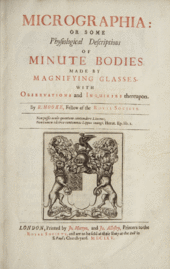
Title page of Robert Hooke's major work Micrographia, published in 1665, which contains numerous drawings made with the aid of a microscope.
Classification of the specialties
Biology as a science can be subdivided into subfields according to various criteria due to the large number of living organisms, investigation techniques and questions: On the one hand, the discipline can be divided according to the groups of organisms considered in each case (plants in botany, bacteria in microbiology). On the other hand, it can also be classified according to the microscopic and macroscopic hierarchical levels worked on (molecular structures in molecular biology, cells in cell biology).
However, the different systems overlap because, for example, genetics looks at many groups of organisms and zoology studies both the molecular level of animals and their behavior towards each other. The figure shows in compact form an order that connects the two systems.
In the following, an overview of the different hierarchy levels and the corresponding objects of biology is given. In its classification, it is based on the figure. As an example, subject areas are listed that primarily consider the respective level.
Microbiology
→ Main article: Microbiology
It is the science and study of microorganisms, i.e. living organisms that cannot be recognized as individuals by the naked eye: Bacteria and other unicellular organisms, certain fungi, unicellular and few-cell algae ("microalgae") and viruses.
Botany / Plant science
→ Main article: Botany
Botany (also plant science) emerged from the science of medicinal plants and is primarily concerned with the structure, phylogeny, distribution and metabolism of plants.
Zoology / Animal Biology
→ Main article: Zoology
Zoology (also animal biology) deals primarily with the structure, phylogeny, distribution, and life expressions of animals.
Human Biology
→ Main article: Human biology
Human biology is a discipline that deals with human biology and the biological foundations of human medicine in the narrower sense and with the sub-fields of biology relevant to humans in the broader sense. Human biology emerged as an independent scientific discipline only in the second half of the 20th century.
Related to it is biological anthropology, which, however, is counted as anthropology. The aim of biological anthropology, with its subfields of primatology, evolutionary theory, sport anthropology, paleoanthropology, population biology, industrial anthropology, genetics, growth (auxology), constitution, and forensics, is the description, causal analysis, and evolutionary interpretation of the diversity of biological traits among hominids. Its methods are both descriptive and analytical.
Molecular Biology
→ Main article: Molecular biology
The basic level of the hierarchy is molecular biology. It is the biological subdiscipline that deals with molecules in living systems. Biologically important classes of molecules include nucleic acids, proteins, carbohydrates and lipids.
The nucleic acids DNA and RNA, as the repositories of genetic information, are an important object of research. The various genes and their regulation are decoded and the proteins encoded in them are studied. Proteins are also of great importance. In the form of enzymes, for example, they act as biological catalysts for almost all reactions in living organisms that convert substances. In addition to the groups listed, there are many others, such as alkaloids, terpenes and steroids. What they all have in common is a basic structure of carbon, hydrogen and often also oxygen, nitrogen and sulfur. Metals also play a role in very small quantities in some biomolecules (e.g. chlorophyll or hemoglobin).
Biological disciplines that deal at this level are:
- Biochemistry,
- Genetics and epigenetics (DNA-independent inheritance of traits),
- Molecular Biology,
- Pharmaceutical Biology and Toxicology.
Cell Biology
→ Main article: Cell biology
Cells are basic structural and functional units of living organisms. A distinction is made between prokaryotic cells, which have no nucleus and are poorly subdivided, and eukaryotic cells, whose genetic information is located in a nucleus and which contain various cell organelles. Cell organelles are reaction spaces within a cell delimited by single or double membranes. They allow different, even opposing, chemical reactions to occur simultaneously. A large part of the living world is made up of organisms that consist of only one cell, the unicellular organisms. They can consist of a prokaryotic cell (the bacteria), or of a eukaryotic one (like some fungi).
In multicellular organisms, many cells of the same design and function join together to form tissues. Several tissues with interlocking functions form an organ.
Biological disciplines, primarily at this level (examples):
- Histology, Anatomy
- Immunology, infection biology, neurobiology
- Mycology, Microbiology, Protozoology, Phycology
- Cell biology, cell physiology
Developmental Biology
→ Main article: Developmental biology
Every living being is the result of a development. According to Ernst Haeckel, this development can be considered on two temporally different levels:
- Through evolution, the form of organisms can develop over the generations (phylogenesis).
- Ontogenesis is the individual development of a single organism from its conception through its various life stages to death. Developmental biology studies this progression.
Physiology
→ Main article: Physiology
Physiology is concerned with the physical, biochemical, and information-processing functions of living things. Physiological research and training is conducted in the academic disciplines of biology and medicine as well as in psychology.
Genetics
→ Main article: Genetics
Gregor Mendel is considered the founder of genetics. He discovered Mendel's rules, which were later named after him, but which were not accepted and confirmed in science until 1900. By far the most important branch of genetics today is molecular genetics, which was founded in the 1940s.
Behavioral Biology
→ Main article: Behavioral biology and ethology
Behavioral biology studies the behavior of animals and humans. It describes behavior, makes comparisons between individuals and species, and tries to explain the emergence of certain behaviors in the course of phylogeny, i.e. the "benefit" for the individual.
Ecology / Environmental Biology
→ Main article: Ecology
The field of ecology (also environmental biology) deals with the interactions between organisms and the abiotic and biotic factors of their habitat at various levels of organization.
- Individuals: Autoecology primarily considers effects of abiotic factors such as light, temperature, water supply or seasonal change on the individual. Biological disciplines that also consider this level are, for example, anthropology, zoology, botany and behavioral biology.
- Populations (Demoecology):
A population is a reproductive community within a species in a temporally and spatially limited area. Population ecology primarily looks at the dynamics of populations in a habitat due to changes in birth and death rates, changes in food supply, or abiotic environmental factors. This level is also studied by behavioral biology and sociobiology.
The social sciences applied to humans can also be seen in connection with the description and study of social associations such as herds or packs.
- Biocenoses (synecology): They represent communities of organisms. Plants, animals, fungi, protozoa and bacteria are mostly interdependent in an ecosystem and influence each other. They are part of material cycles in their habitat up to global material cycles such as the carbon cycle.
The organisms may interact positively (e.g. symbiosis), negatively (e.g. predation, parasitism), or simply not at all.
Biotic community (biocenosis) and habitat (biotope) together form an ecosystem.
- Landscape ecology focuses on the spatial expression of ecological relationships and control loops. It explores the interaction of biodiversity and geodiversity at the level of the resulting landscape diversity.
- In particular, human ecology focuses on the reciprocal relationships between humans and the environment.
Biological disciplines that deal with ecosystems (examples):
- Biogeography, biocenology
- Ecology, chorology, geobotany, plant sociology.
Since the evolution of organisms can lead to adaptation to a particular environment, there is an intense exchange between the two disciplines, which is particularly expressed in the discipline of evolutionary ecology.
Evolutionary biology and systematics
→ Main article: Evolution, systematics (biology) and taxonomy
Phylogenesis describes the development of a species over the course of generations. Here, evolutionary biology considers the long-term adaptation to environmental conditions and the split into new species.
Based on phylogenetic development, biological taxonomy classifies all living things into a scheme. The totality of all organisms is divided into three groups, the domains, which in turn are further subdivided:
- Archaea (Archaea)
- Bacteria (Bacteria)
- Eukaryotes (Eukarya)
Special zoology deals with the classification of animals in this system, special botany with the classification of plants, and microbiology with the classification of archaea, bacteria and fungi.
A phylogenetic tree is drawn as a common representation. The connecting lines between the individual groups represent the evolutionary relationship. The shorter the distance between two species in such a tree, the more closely related they are. The sequence of a widely distributed gene is often used as a measure of relatedness.
As, in a sense, a synthesis of ecology, evolutionary biology, and systematics, biodiversity research has been established since the late 1980s, also bridging the gap to conservation efforts for biodiversity and to political agreements on conservation and sustainability.
See also: paleontology and paleoanthropology
Synthetic biology
→ Main article: Synthetic biology
In this field, bioengineers attempt to produce artificial viable systems that are controlled by a genome, just like naturally occurring organisms.
Theoretical biology
→ Main article: Theoretical biology
Theoretical biology (also systemic biology) deals with basic principles of biological systems at all levels of organization that can be formulated mathematically.
Systems Biology
→ Main article: Systems biology
Systems biology attempts to understand organisms in their functional entirety. It follows systems theory and uses mathematical models as well as computer simulations. It overlaps with theoretical biology.

Bees on their honeycomb
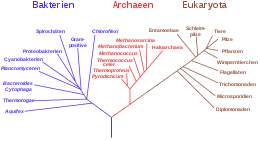
Phylogenetic tree showing the division of living organisms into the three domains.
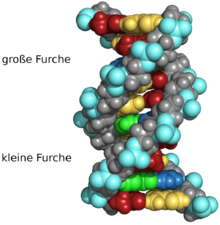
Molecular structure of a DNA double helix
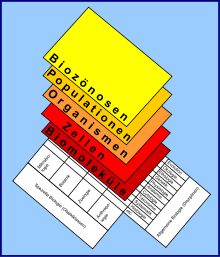
Biology subject classification
Questions and Answers
Q: What is biology?
A: Biology is the science that studies life, living things, and the evolution of life. It includes animals, plants, fungi and microorganisms such as bacteria and archaea.
Q: Who are biologists?
A: Biologists are people who study biology.
Q: What does biology look at?
A: Biology looks at how animals and other living things behave and work, and what they are like. It also studies how organisms react with each other and the environment.
Q: How long has biology been a science?
A: Biology has existed as a science for about 200 years. Before that it was called "natural history".
Q: What method do biologists use to answer questions?
A: Like all sciences, biologists use the scientific method which means they must be able to show evidence for their ideas and that other biologists must be able to test the ideas for themselves.
Q: What types of questions does biology attempt to answer?
A: Biology attempts to answer questions such as "What are the characteristics of this living thing?", "How do the parts work?", "How should we group living things?", "What does this living thing do?", "How does inheritance work?","What is the history of life?"and"How do living things relate to their environment?".
Q: How is modern biology influenced by evolution?
A: Modern biology is influenced by evolution which answers the question “How has the living world come to be as it is?".
Search within the encyclopedia